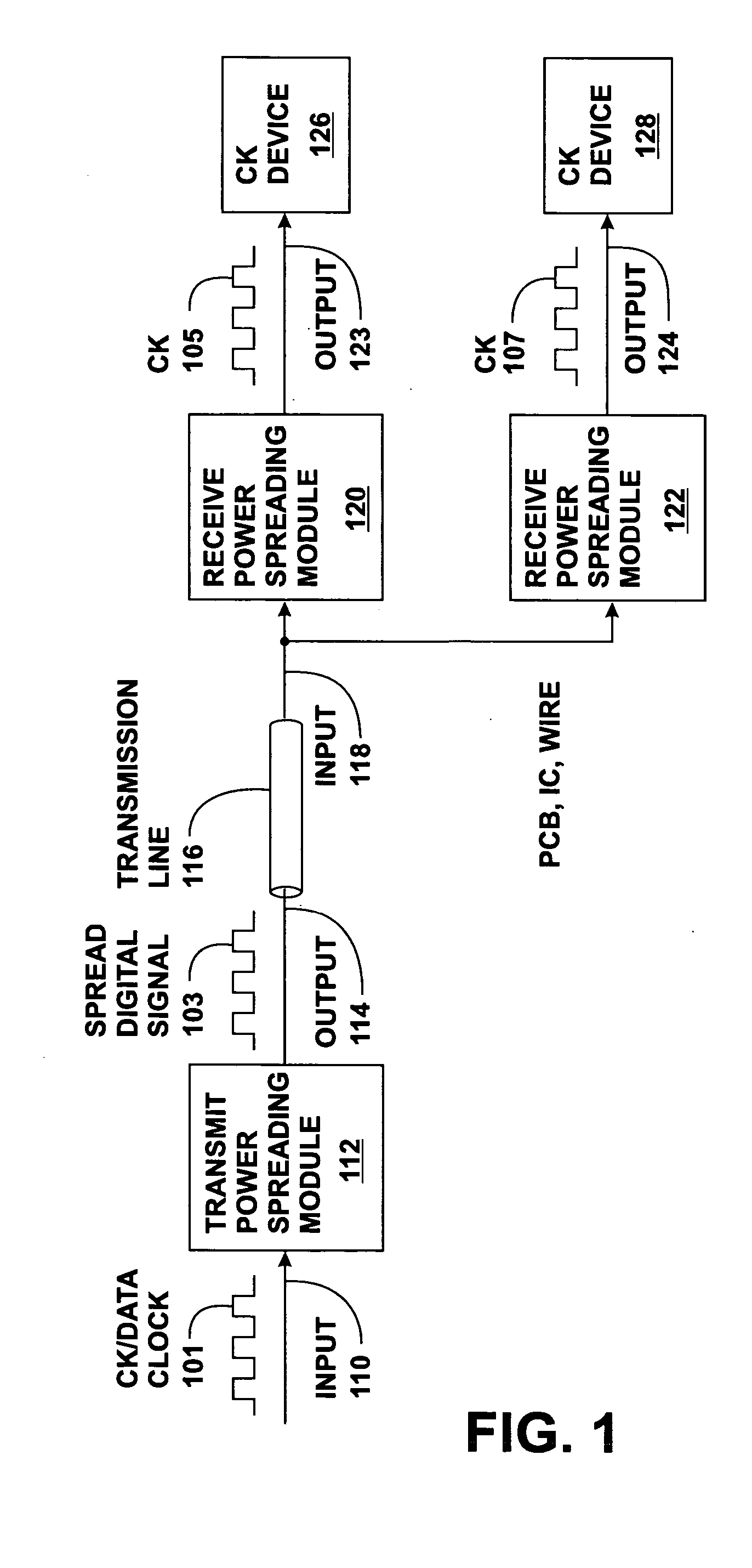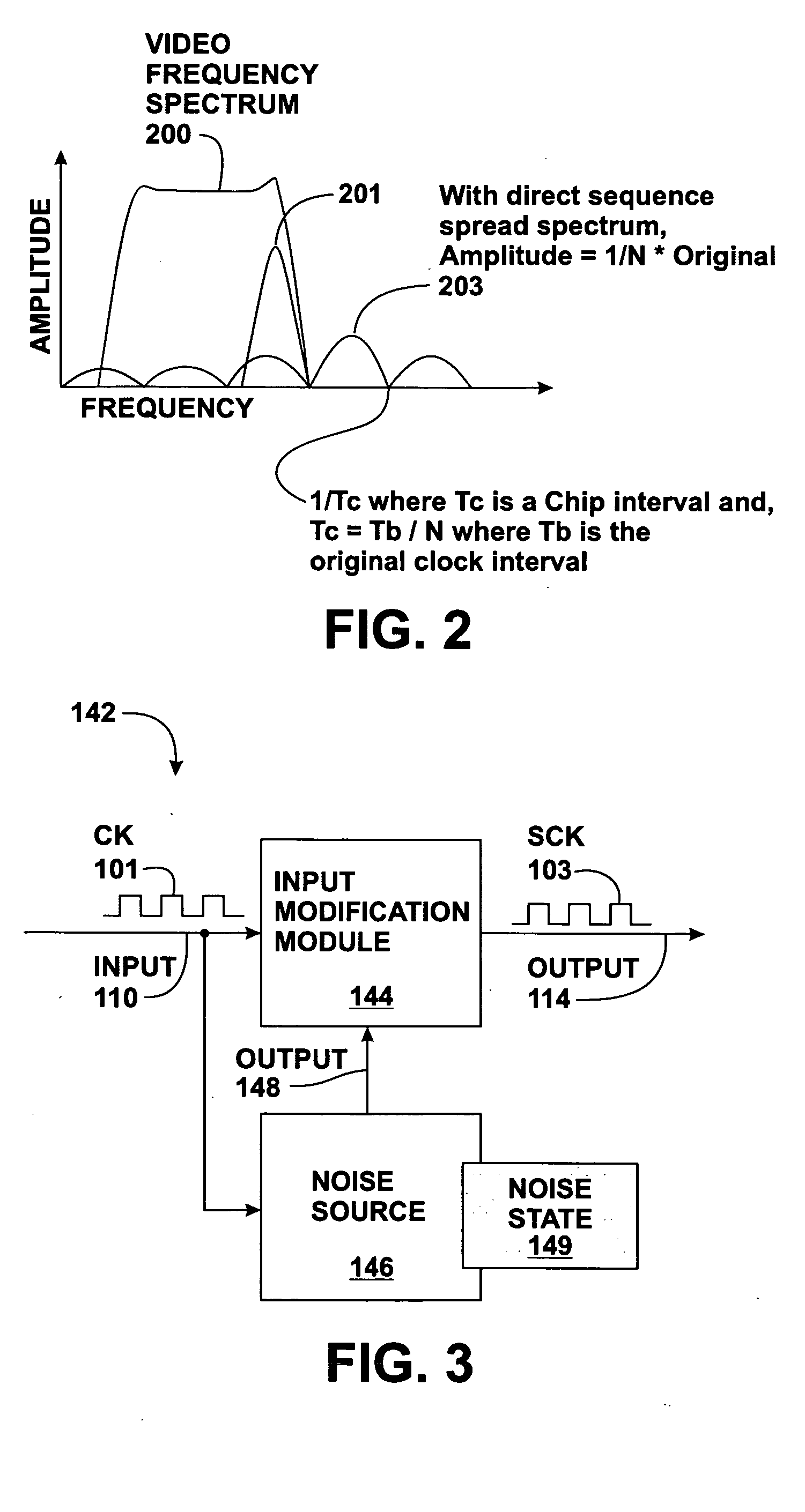Noise source synchronization for power spread signals
a power spread signal and noise source technology, applied in the field of electromagnetic interference and radiation emissions, can solve the problems of degrading graphics, and devices supporting high speed clocks and data paths, and affecting the quality of video, audio, and graphics
- Summary
- Abstract
- Description
- Claims
- Application Information
AI Technical Summary
Benefits of technology
Problems solved by technology
Method used
Image
Examples
Embodiment Construction
[0034] One embodiment of the present disclosure provides a method for a gated direct sequence spread spectrum (GDSSS) clock distribution in which an original clock signal or other digital data signal is divided and spread over a wider frequency spectrum to reduce the radiated emissions. As used herein, a clock is defined as integrated circuit based timing devices. In one embodiment, a clock signal is modified by a power spreading signal that introduces small phase shifts. These phase shifts may be random, pseudo-random, non-linear, based on a polynomial progression, and the like. Unlike with typical spread system solutions, these frequency hops, which spread the energy spectra (EMI), can occur at the frequency of the clock.
[0035] References to the term power spreading signal and the term noise source are made extensively herein. A power spreading signal (also referred to herein as a digital noise signal) comprises any of a variety of digital signals which is expected to introduce p...
PUM
 Login to View More
Login to View More Abstract
Description
Claims
Application Information
 Login to View More
Login to View More - R&D
- Intellectual Property
- Life Sciences
- Materials
- Tech Scout
- Unparalleled Data Quality
- Higher Quality Content
- 60% Fewer Hallucinations
Browse by: Latest US Patents, China's latest patents, Technical Efficacy Thesaurus, Application Domain, Technology Topic, Popular Technical Reports.
© 2025 PatSnap. All rights reserved.Legal|Privacy policy|Modern Slavery Act Transparency Statement|Sitemap|About US| Contact US: help@patsnap.com



